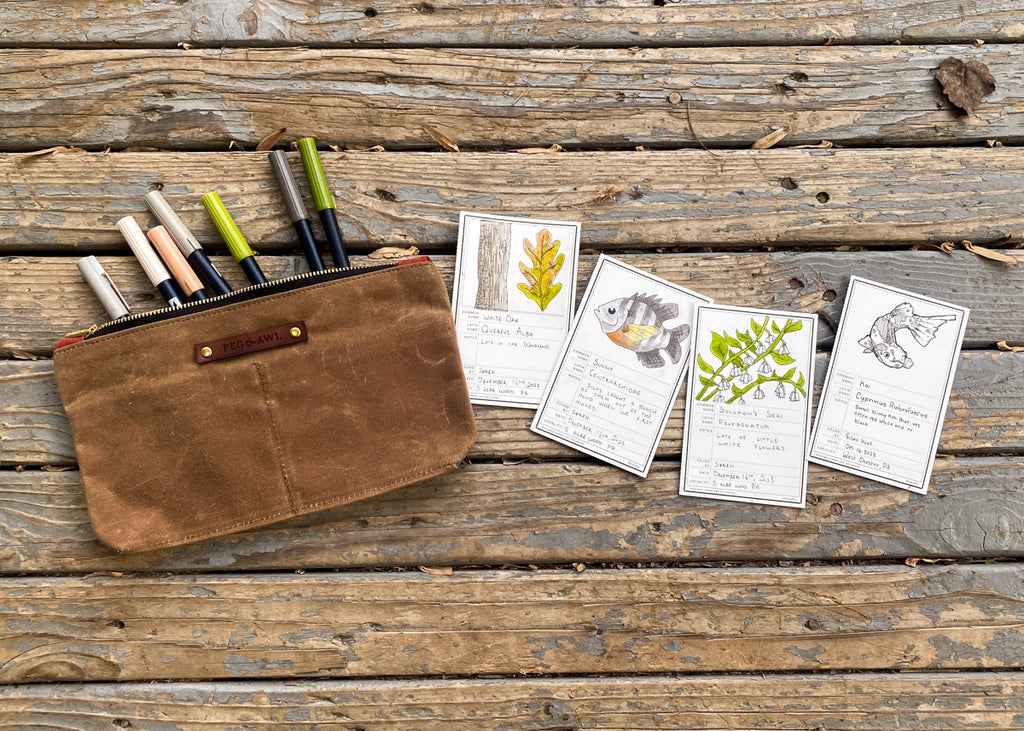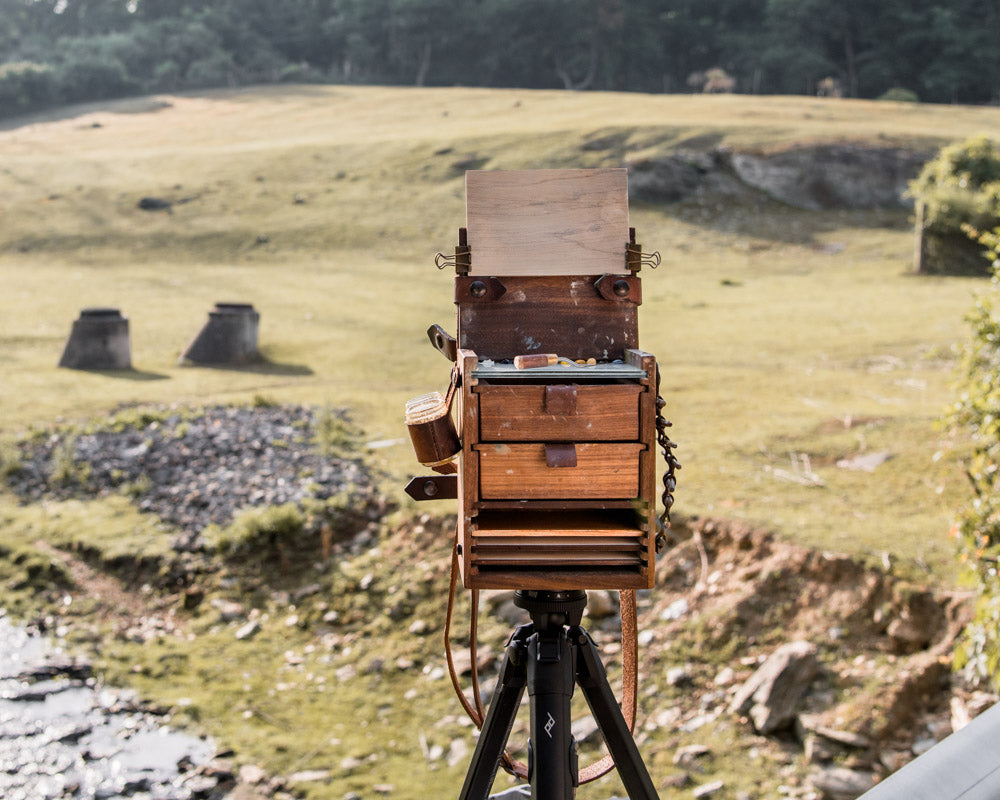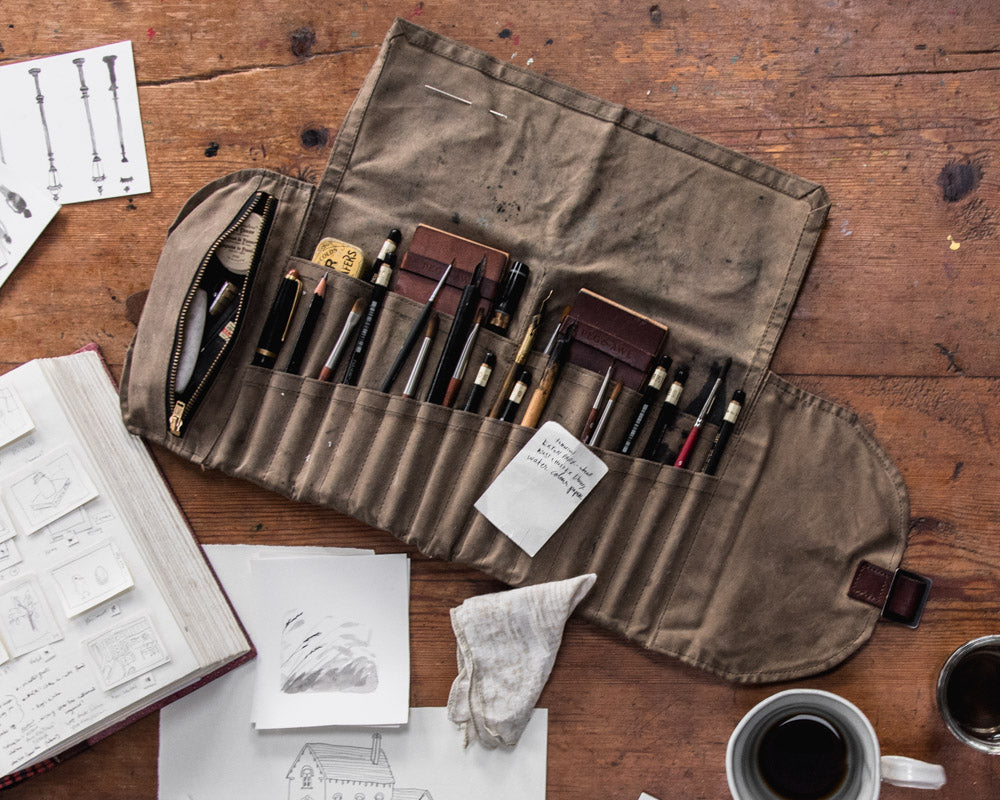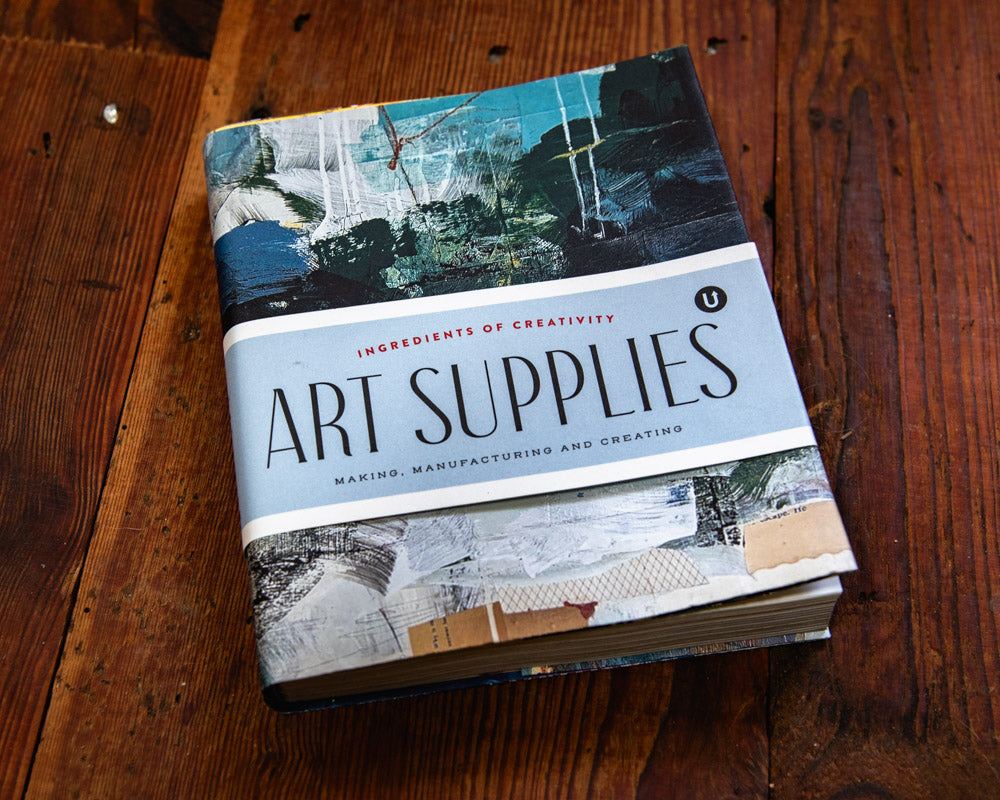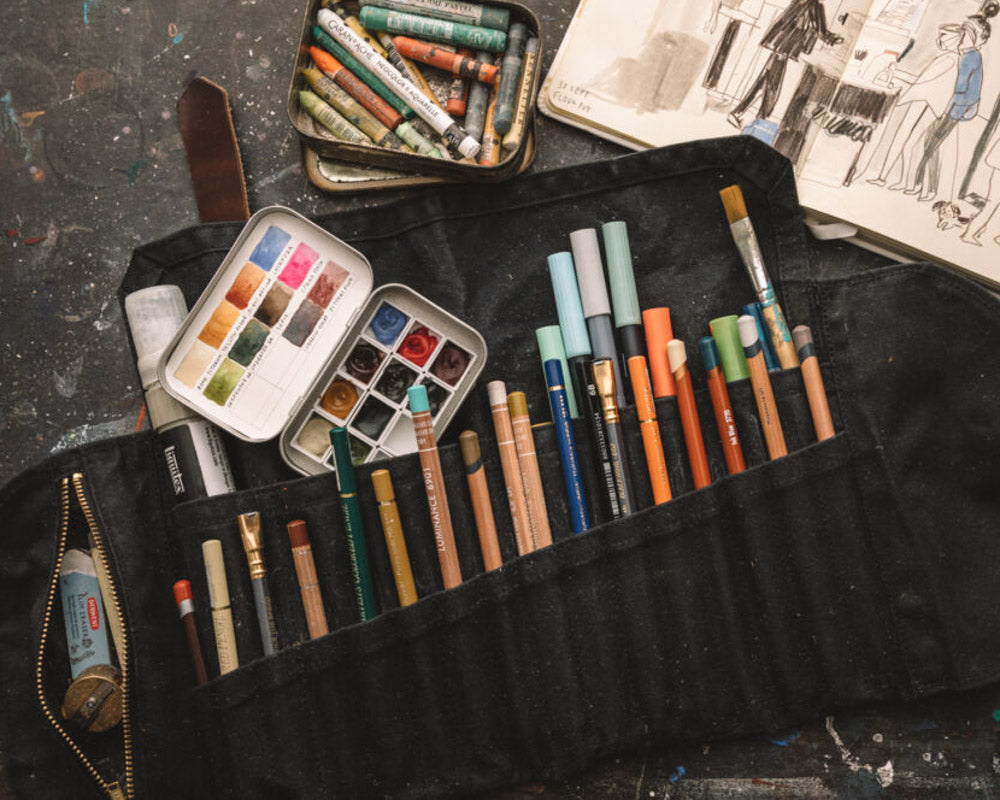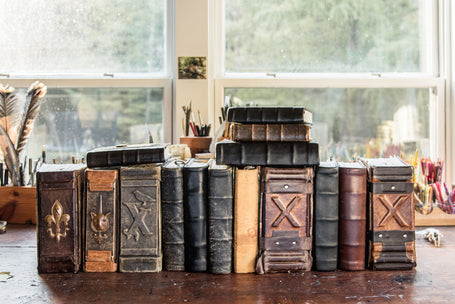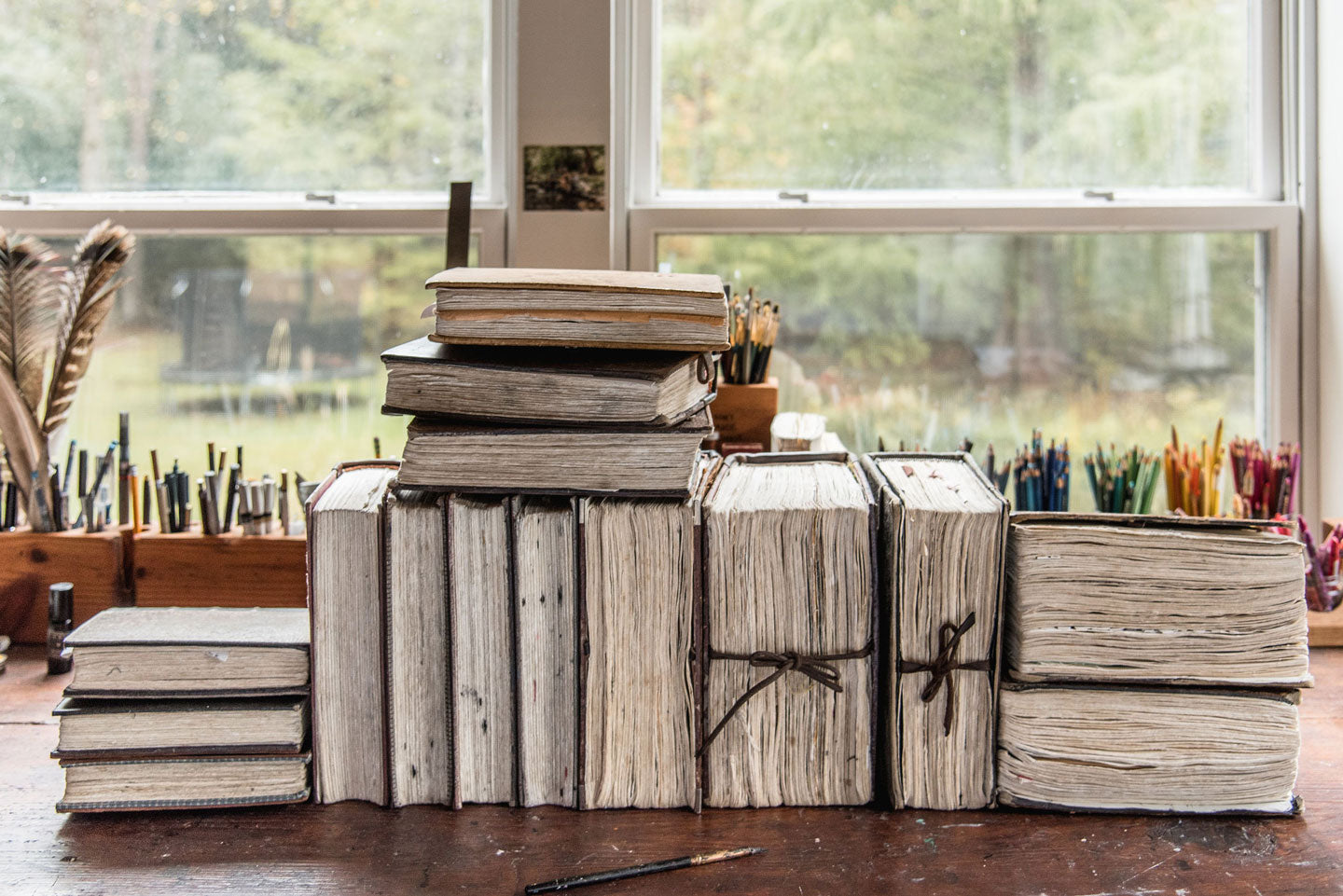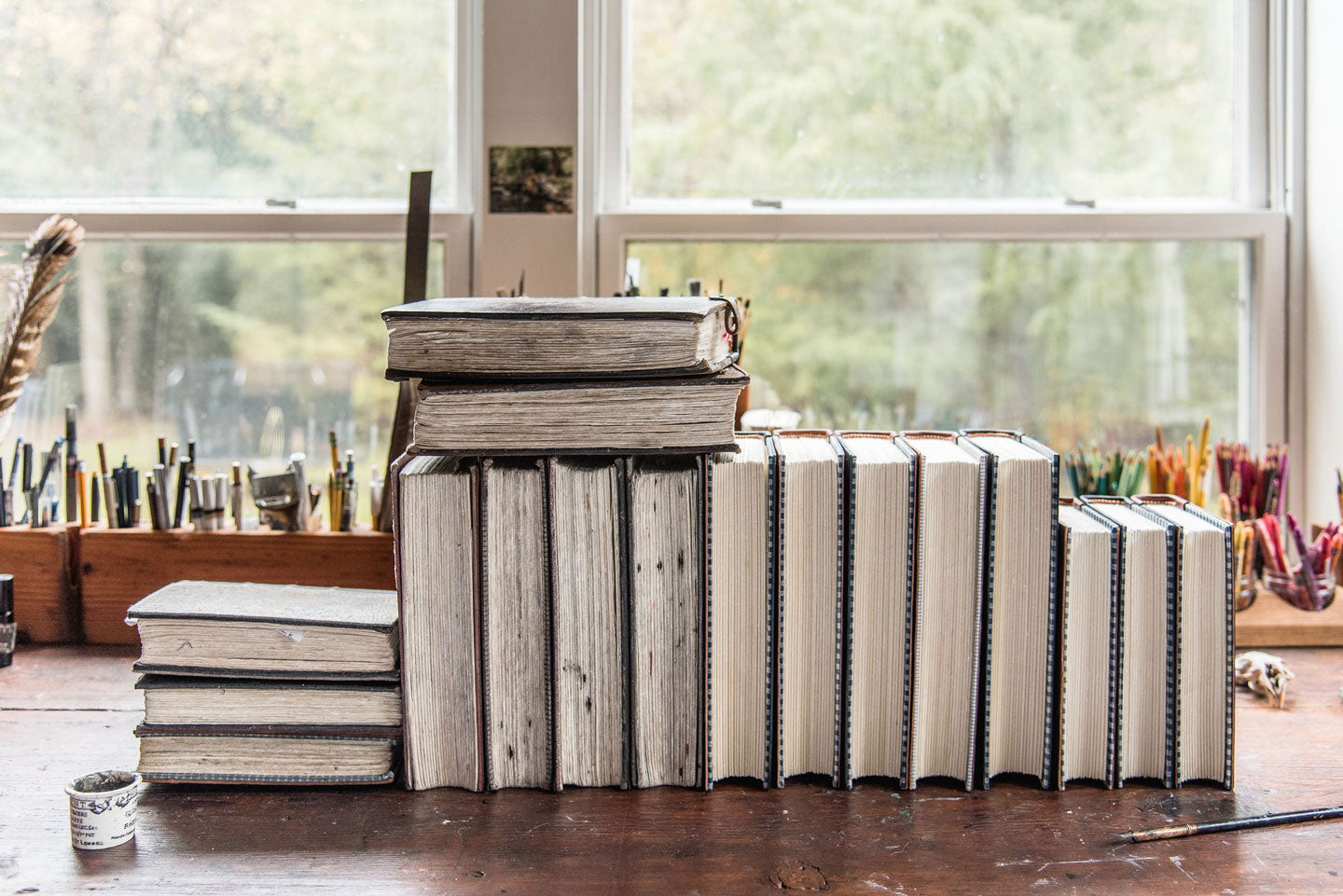Blog
Our Boys Document Creatures and Plants with their Specimen Card Notebooks!
Specimen Cards and a Closer Look Around
Read The Post-
The Scout Plein Air Box Video Walkthrough
Read The Post -
The Sendak Artist Roll: A Walkthrough Video
We’ve watched all of the YouTube reviews of our Sendak Artist Roll (thank you!) and have made our own video to answer some questions and share our experience! We are...
Read The Post
Press
-
“Margo is joined by Margaux Kent, Co-Founder of Peg and Awl. Margaux and her husband Walter created Peg and Awl without a plan but rather a fortunate pairing of two minds, different but in sync. Together with a team they create from olde things, treasures found and recovered from misfortune and neglect, relics of the unusual, the confused and the macabre, cut and pulled and built into wearable curiosities, inscribable keepsakes and usable, long-lasting treasures.” – View on Window Chats
“Margo is joined by Margaux Kent, Co-Founder of Peg and Awl. Margaux and her husband Walter created Peg and Awl without a plan but rather a fortunate pairing of two minds, different but in sync. Together with a team they create from olde things, treasures found and recovered from misfortune and neglect, relics of the unusual, the confused and the macabre, cut and pulled and built into wearable curiosities, inscribable keepsakes and usable, long-lasting treasures.”
– View on Window ChatsEpisode 121: Designing and Making Useful Treasures That Inspire Creative Living With Margaux Kent of Peg and Awl
Margo and I discuss discovery, poetry, and all sorts of making; we also talk about the beginnings of Peg and Awl, the importance of promoting oneself and keeping everything in house, and more. But listen for yourself! I do blather a lot, but, erm, practice shall improve the ongoingness in time!Press: Windowsill Chats with Margo Tantau, Featuring Margaux Kent of Peg and Awl
“Margo is joined by Margaux Kent, Co-Founder of Peg and Awl. Margaux and her husband Walter created Peg and Awl without a plan but rather a fortunate pairing of...
Read The Post -
Press: Our Feature in Uppercase Magazine’s Art Supplies Book
Uppercase Magazine’s Art Supplies book is full of delectable art supplies, art, and artists. We were delighted to be invited to be part of the fun and to be in...
Read The Post -
Press: Sarah Dyer Reviews the Peg and Awl Sendak on Jackson’s Art Supplies Blog
Sarah Dyer, one of my favorite picture book makers and illustrators, recently wrote a detailed and very informative review on our Sendak Artist Roll for the Jackson’s Art Supplies blog....
Read The Post
-

The first abandoned house I remember exploring was across from the grocery store my mom and I skipped to, arm in arm, when I was in 7th grade. We had seen its decaying Victorian turrets peeking above the abundance of neglected foliage many times before braving its withered threshold. Early one Spring, we ventured into that liminal space and I don't believe I ever completely left. Inside reeked of piss and mildew. Broken bottles and yellowed newspapers made a foul floor for weekend teenagers. But in the center – beneath a makeshift skylight and its funnel of wintry, warm, yellow sun – grew a single white tulip. Discovering this unexpected beauty with my mom so long ago, was surely a heavy pour in the cocktail of experiences from my youth that helped determine who I was to become.

The first abandoned house I remember exploring was across from the grocery store my mom and I skipped to, arm in arm, when I was in 7th grade. We had seen its decaying Victorian turrets peeking above the abundance of neglected foliage many times before braving its withered threshold. Early one Spring, we ventured into that liminal space and I don't believe I ever completely left. Inside reeked of piss and mildew. Broken bottles and yellowed newspapers made a foul floor for weekend teenagers. But in the center – beneath a makeshift skylight and its funnel of wintry, warm, yellow sun – grew a single white tulip. Discovering this unexpected beauty with my mom so long ago, was surely a heavy pour in the cocktail of experiences from my youth that helped determine who I was to become.
Three years ago, just one year after officially beginning our homeschool adventure with Søren and Silas, we decided to move out of Philadelphia in search of a new home amongst the trees. We quickly stumbled upon the patch of land that we’ve come to call The Five Acre Wood – consisting of a ton of invasive growth, some lawn, woods, ponds, animals, two creeks, our house (built in the late 1700s or early 1800s), a spring house (formerly our studio) and – just across the road – a dilapidated barn. Truly, our timing was perfect.


The Old Barn from the road. We hired Precise Buildings to rebuild the barn! In the listing Walter had spied a corner of the barn – a cautious partial revealing of this daunting danger for most, we reckoned, and possibly the reason the house had been on the market for so long. But we dreamed of transforming the barn into a studio for art, homeschooling, woodworking, and yoga. Two years after our move, with the sale of our Philadelphia home (previously serving as an Airbnb), we were able to embark on this new adventure.
The project began with the removal of decades – centuries even – of junk that had been accumulating. We briefly considered hauling the stuff to a flea market to help fund the barn restoration, but after moving some of it out (there was so much!) we ordered a dumpster, and set everything curious in rows in the grass for the taking. There were chairs, well-loved ice skates, wooden sleds, tons of old bottles and antique toys – and then came the people – making it a strange theatre. The conversations that arose during the treasure-dispersal resulted in many journal pages of quotidian conversations which reveal people to be anything but the perceived everyday.


Most of these strange treasures found homes... The telephone operator thing went to a musician who plans to turn it into something musical. After the emptying, came the digging of an incredibly deep well which resulted in the grinding and unexpected excavating of Wissahickon Schist – also known as trash stone – from which our house was built. I collected a salad container full and transformed some of the pre-ground pigment into paint for my Iris Painter’s Palette.


Look for Bioplastic Pans of this handmade watercolor paint in our First Of a Kind Collection of the Year! Wissahickon Schist — also known as Trash Stone — makes a gorgeous ghost green colour. We then removed the lead-free wood siding, the tin roof, the old doors, the flooring, and some beams, with the intention of re-using as much of this as possible in different places both inside of the barn and out. When the township inspector came and saw the rotted state of the exposed bits that were revealed, we had to embark upon a plan b, which brings to mind The Ship of Theseus.
By the time we finished removing the rotted bits, the trusses, the rafters, the floors, it was hard to say if we were reclaiming an old barn or building a new one in its image. The barn shape– the space within the frame – became one of the few parts I could solidly say remained of the historic place. But over the next few weeks – as I observed the delicate skeleton of the old barn standing strong but precarious in the wind and rain, with day now inside and night inside too – I grew suspicious of this boundaryless thing I wanted to keep. What were we preserving, and more, why?


Putting on a new roof before taking it off to remove more of the old. Delicate skeleton of the old barn. 

After getting over the long pause whilst figuring out plan b... A new view! Most of the structure is new now, but within it is a tapestry of old materials. Walter transformed the old extinct-ish American Chestnut tree trunk beams into two glorious sets of double doors. An old second floor door, which led to an unsurvivable drop, is now part of the bathroom. The old floorboards were flipped and trimmed and woven with old floorsboards from other barns, and together have been sanded and oiled. The crooked skeleton of hand-hewn wood with its mortise and tenon joints, trunnels, and roman numeral marriage marks, lingers charmingly in the middle of the new open space. The white-washed wall, that once held tobaggons, hockey sticks, and fishing poles still divides the two main spaces. The stone-walled basement, where the barn’s last farm animal – a calf – lived in the 1960s, will soon be a woodshop and ceramic studio. We put windows and skylights throughout the building, replacing the vertical cracks that let only slivers of light in for the past 200 or so years.
The shape within the frame remains, but the air that flowed through it like water through a river, has surely been fully turned over. Already, the newly brightened space has illuminated a life unimagined by the original builders, including family yoga, the beginning of a writing and drawing workshop, the penciling of portraits, the playing of boardgames, the making of maps, a happy Pearl and a sleepy Pearl, and the curiosity of two families embarking on new adventures. The barn is made of pieces that were and are and will be. Are we so different?


A Trunnel – one of many Tree Nails securing the original structure. Roman Numeral Marriage Marks to help builders determine what went where! 

An exterior door that led to the unsurvivable drop, (that looks rather survivable from here...) ...is now our bathroom door! 

The Floor Sanders – Søren, Silas, and I — unintentionally recreating The Floor Scrapers by Gustave Caillebotte. The Floor Scrapers by Gustave Caillebotte 

A satisfying before and after! We first rented this Drum Floor Sander and used 60 grit sandpaper, then used this Orbital Sander with 80 and 100 grit. Finishing the new floor with Citrus Solvent and Tung Oil from The Real Milk Paint Company. We use this natural finish on Peg and Awl treasures too! 

Pearl enjoying the new space from her favourite rug – a flea market find! We painted the floor white! Søren tries out the new staircase that he helped install, 

Original wall that divides the two parts of the barn. Pearl and Søren, my loves. Walter used the saw mill to make doors out of the American Chestnut trunks! 

American Chestnut Tree beams born in the 1700s leave their lowly position of being walked upon + now usher in light, people, and animals! Walter’s gorgeous first go at door building! Peg and Awl Barn Restoration Project at the Five Acre Wood in Pennsylvania
The first abandoned house I remember exploring was across from the grocery store my mom and I skipped to, arm in arm, when I was in 7th grade. We had...
Read The Post -
The pileup is usually an effective way of moving us into high speed. We will open our barn doors tomorrow, for the first time, as a Peg and Awl storefront! It will also be filled with our art, which is most often squirreled away under our rounded bodies as we scribble, cut, or swish with whatever materials are at hand upon our pages.


Smudge and Other Pandemic Pages“If you like to write or draw or dance or sing, do it because it’s great: as long as we’re playing around like that, we don’t feel lonely, and our hearts warm up.”
–from The Woman Who Killed the Fish by Clarice LispectorI’ve been making books and filling them for as long as I can remember. The books pile up – a slow and steady drip of ink on paper that may someday push us out of our home. One of the gifts of the pandemic is a clear time frame. I’ve decided to go back into my journals – specifically, into the pandemic pages, to see what I could find. I found the patterns of our lives on repeat, everything obsessively documented as if we wouldn’t live without record of it. I found Pearl, and plants, grief and illness, disappearance and disappointment, homeschooling, camping, movement, and details so small I needed the quiet of a pandemic to experience them. It is a strange vocation, to be this kind of capturer of the quotidian.
“What is the conversation?” asks Claire, a few times. Conversation? I don’t know how to answer that. The conversation is on the pages, extracted from life, fragments rearranged, stories imagined, reimagined. Patterns, tatters. Is there ever an actual anything, or is everything imagined? There isn’t a conversation – there are infinite conversations and there are no conversations. It depends on who stands in front of what, and where. It depends on who is next to them. How engaged they are. How curious. It depends on what I say here, if anything, and whether you read it. Will you?
Just before the pandemic, I chose a word for the year, for 2020: The word was lightness. I wrote:
“My word for the year is lightness. I love this idea of finding a word to live alongside. So far, (so early but so far), it has freed me from the fear of not making the right marks. It has led me to say yes to a wintry adventure at the seashore where with wet knees and raisoned fingers, we searched for Cape May diamonds with the enthusiasm of children whilst the actual children played with drones, dipped their feet (and pants) into the frigid water, gathered a few specimens, and made their way back to the warm car. These are things that I love, but the weight of obligation and difference and the world’s expectations make it difficult to be so light. The more I forget this, the longer I sit. The longer I sit, the heavier I get – the weight of the dust settling upon me. Lightness. The word, my companion, reminds me to hover and to float – to move and to keep moving.”
It was the right choice, this word, and it came just in time.

From A Tear and A Seed A sneaky peek! 

The Things That I remember Are Not in These Photographs SMUDGE! Left-handed (non-dominant) hand drawings. A Tear and A Seed... drawings from a book I didn’t illustrate. A stack of my smudge journals! Our First Storefront!

“...the impeded stream is the one that sings.”
–from Our Real Work by Wendell BerryThe pileup is usually an effective way of moving us into high speed. We will open our barn doors tomorrow, for the first time, as a Peg and Awl storefront! It will also be filled with our art, which is most often squirreled away under our rounded bodies as we scribble, cut, or swish with whatever materials are at hand upon our pages.
We are still scrambling, but hope you come by and say hey! Email us for the address or find it at the Chester County Studio Tour website. Parking is limited – if ours is filled, park in the nearby neighborhood! If I have time, I’ll mow some roadside invasives for side-of-the-road parking.
Pouches! We have a new batch of A Rural Pen ink! Seaside Tote, Caddies, &c. Some of our Last Chance waxed canvas bags are in the storefront! 
New Prints from A Tear and A Seed (coming soon to our website, maybe...) We will stock our jewelry in this old treasure! Walter, Søren, and Silas!
We are still working and will share updates on Instagram!
Søren has been working on this gigantic map for months! Come see it in progress or on Instagram @sorenscoutkent
Everywhere, Astonishments!County Studio Tour 2023 | Peg and Awl
The pileup is usually an effective way of moving us into high speed. We will open our barn doors tomorrow, for the first time, as a Peg and Awl storefront!...
Read The Post
Bookbinding Tutorials
We have put together a long overdue tutorial on bookmaking. I have prepared a list of things you will need to make your first notebook. This is a very simple start—you can use materials that you have at home and anyone, any age can join in!
So, let’s make books!
-
Explore Our Tutorial Series to Bind Your Own Journal. You can use materials that you have at home, and anyone of any age can join in!
Photo by @holddear
Share your Peg and Awl with #quarantinebookbindingclub to be featured!


Bookbinding Tutorials
Read The Post -
So here we are again – still at home and pleased to share our next installment of our Bookbinding at Home series! We hope you have found some small things to enjoy in this time of truly slooooowing down. For me it is always the small things that brighten my days, like watching Toots and Yedda – our goose landmates – and transforming a pile of field stone into an elegant yet makeshift garden path!
As for the tutorials, we are learning a lot (we hope you are too) and are so grateful for everyone who is joining us!
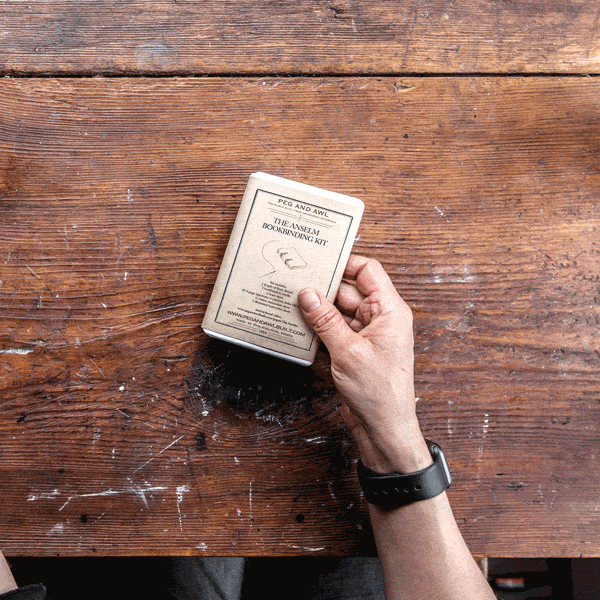

Bookbinding at Home: Part 2
So here we are again – still at home and pleased to share our next installment of our Bookbinding at Home series! We hope you have found some small things to enjoy in this time of truly slooooowing down. For me it is always the small things that brighten my days, like watching Toots and Yedda – our goose landmates – and transforming a pile of field stone into an elegant yet makeshift garden path!
As for the tutorials, we are learning a lot (we hope you are too) and are so grateful for everyone who is joining us!
Project No. 2: Stitching Signatures for a Coverless Sketchbook


Here is what you will need:
1. Needle – bookbinding needles have roundy tips and big eyes, but most needles will work!
2. Thread – any thread will do. If it is super thin, double it up.
3. Pencil – grab your favourite pencil to plot your stitching holes.
4. Paper – this is for the inside. Do you like lined paper, sketch paper, the back of used paper, graph paper? Gather your favourites, mix ’em up or stick to one!
5. Thumbtack – or something sharp to poke holes through paper and cardstock.
6. Scissors – for snipping your thread.
7. Fabric – this will serve as your linens that will hold the book together. Happy treasure hunting!
8. Glue – to glue your fabric to the front and back covers of your book. Elmers works!
We get most of our bookbinding tools and materials from Talas, including needles, thread, linen tape and other materials we haven’t explained yet. The waxed thread that I am using is a 3 ply waxed Irish Linen thread.
We love Strathmore drawing paper for our journals and find that and other supplies through Artist & Craftsman. Both the latter and Talas are small companies who have shut down their physical locations but are currently taking online orders and shipping!
As for covers, vintage textiles, needle boxes and vintage tools – you can find all kinds of unexpected magic at home as well as on Etsy and eBay. We at Peg and Awl absolutely encourage creativity in materials and tools, and finding vintage stuff is a nice way to reclaim some of the excess of items that already exist on our planet. This is also a way to make your project and your desk specifically yours!
Bookbinding Glossary
Sheet: The unfolded paper pages that you start your project with
Folio: A folded sheet
Signature: Gathering of folios
Leaf: One half of a folded sheet
Page: Each side of each leafPlease share your little books with us with hashtag #quarantinebookbindingclub – we’d love to see what you are making, and share the results!
The Next Step…
Continue on with our next bookbinding project: covering a coverless book! We will only be covering a book, so bring your coverless book from this project to the next installment.
And While You’re at Home…
If you are housebound or feeling antsy, there are oodles of projects online and on Instagram. I’ve found inspiration from The Good Ship Illustration’s drawing guide The Sketchbooker’s Friend. The first tip is pretty great:
NO PHONES. Don’t take a photo, then draw from it. Don’t finish your drawing at your desk later. It is NOT ALLOWED and we are very strict!
Bookbinding at Home, Part 2: How to Stitch a Coverless Journal!
Read The Post -
Here is the last video in our first bookbinding tutorial series: Bookbinding at Home. Thank you all for following along and sharing your books. We are so psyched to see all of the books that have come out of these tutorials!
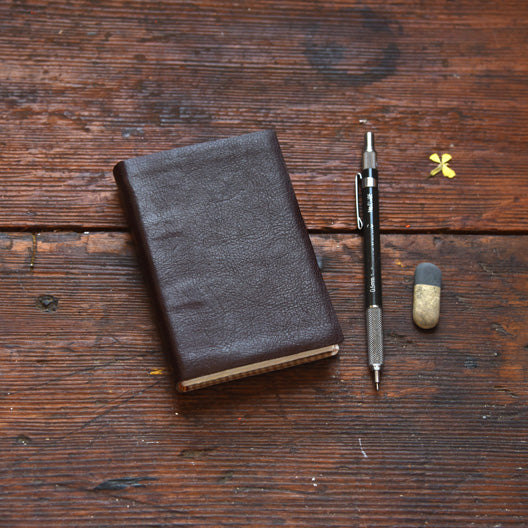

Here is the last video in our first bookbinding tutorial series: Bookbinding at Home. Thank you all for following along and sharing your books. We are so psyched to see all of the books that have come out of these tutorials! We hope you find comfort in the process of binding your books as well as filling them. There is certainly a lot to document right now— in both pictures and words.
We love seeing your books and sharing in our Instagram stories and posts (@pegandawl) – be sure to use #quarantinebookbindingclub and/or #pegandawlbinds on your social media posts so we can find you!Project No. 3: Covering a Journal with Leather
Here is what you will need:
Leather – If you have scrap, an old jacket or wallet, anything soft and malleable, have it ready! Scraps of many colors are also available from many sellers on Etsy.
Fabric – This will replace mull (a starched cheesecloth) that will be glued directly to your book block to strengthen your book.
Thread – For the headband. Aim for something thick that will take up space. You can also use a pre-made headband.
Scissors – For trimming your cover. If you are using leather for your cover, make sure they are sharp!
Hammer – For shaping your book block. Be sure it is clean as it will be coming in contact with your paper! (I used a rock hammer and my pages don't hide it!)
Glue – For gluing your leather to the front and back covers of your book. Elmers works!
Heavy Book – This will be your book press! Any heavy book will do, though I find art books (and their dense pages) perfect for the job!Bookbinding at Home Part 3: Covering a Journal with Leather
Read The Post -
We’ve made another video installment to our Bookbinding Tutorials – this one is in response to all of the detailed questions you’ve been asking about our materials. I’ve also shared a little of my bookbinding history—where you can see my old falling apart journals as well as some insides and a variety of antique leather outsides!

We’ve made another video installment to our Bookbinding Tutorials – this one is in response to all of the detailed questions you’ve been asking about our materials. I’ve also shared a little of my bookbinding history—where you can see my old falling apart journals as well as some insides and a variety of antique leather outsides!
Chapters:
0:00 List of Materials
0:32 How Margaux Got Started Bookbinding
1:37 Margaux’s Early Journals
2:59 Overview of Materials
3:31 Thread
4:07 Needle
4:38 Tape
5:14 Headband
5:38 Mull
5:49 Glue
6:03 Cover
8:32 Paper
9:07 ConclusionBookbinding at Home Part 4: Materials and Meanderings
Read The Post
-
Our first Of A Kind Collection of 2022 is bursting with character! Each of these collections allows us to dig around and find treasures within treasures. Every discovery holds a bit of the past, and the story and marks accumulated. They are a joy to put together and harken back to the best part of our origin story – the gathering of old things and the reimagining and reworking of them into once again useful objects.

Our first Of A Kind Collection of 2022 is bursting with character! Each of these collections allows us to dig around and find treasures within treasures. Every discovery holds a bit of the past, and the story and marks accumulated. They are a joy to put together and harken back to the best part of our origin story – the gathering of old things and the reimagining and reworking of them into once again useful objects.
Hand Mulled Ghost Green Watercolour Paint!
We made two small batch sets for painters. The first is the Petite Paint Set, which contains a pan of hand mulled Ghost Green watercolour and a brush rest. The other is a set of 3 Brush Rests for those of you with more than one brush or pen in use!
Our watercolour is made from Wissahickon Schist that was pulverized when digging the well for our barn. Made from rock, the paint is gritty in texture, and a warm, earthy grey green. This paint is in Bioplastic Pans, made by Poems About You, that fit in our Painter’s Palettes.

Bioplastic pan of Ghost Green Watercolour. The Wissahickon Schist was pulverized when digging the well for our barn. 

Wissahickon Schist – also known as Trash Stone – makes this gorgeous ghost green colour. I transformed the pre-ground pigment into paint, which is part of our Of a Kind Collection! 
A page of my left-handed #100DayProject in my Anselm Sketchbook. Portrait of my family in Ghost Green. Printable: Paint Pan Packaging
We have made this paint packaging available so that you can package your own handmade paint. As it is, it is designed to wrap around the Bioplastic Pans by Poems About You, although you can adjust and be creative about your uses and sizing!
Handmade Brush Rest made from Reclaimed American Chestnut!
The Brush Rests (here in a trio) are made from extinct* American Chestnut beams that – for nearly 200 years – held up our barn (read about our barn restoration here). Walter turned them into barn studio doors and made these delicious little brush rests with the scrap – they fit perfectly in the Sendak pocket and may just make clean up a touch easier next time!
*Read more about the blight on the American Chestnut here.

Our Brush Rest, Hand Mulled Paint, and Tilda Painter’s Palette together! I’ve been using my brush rest also as a rest for my vintage dip pens, so we're also offering a Trio of Brush Rests! 

The barn – before restoration! These American Chestnut Tree beams, born in the 1700s, held up our barn for nearly 200 years. 

Walter used his Alaskan Saw Mill to mill down the beams. We’re excited to share a portion of this beautiful reclaimed wood in the form of brush rests! Mystery Boxes!
They are back! We’ve sifted through our misfits: merry mishaps, prototypes, and items riddled with character – imperfect but fully functional. We’ve have grouped them together into themed mystery boxes at nearly half price! Though not for the faint-hearted, each set is useful and nearly half price. Enjoy the mystery and the gifting potential: one for you, one for me, one for you...
These boxes are perfect for the indecisive (who love Peg and Awl) or for those who just love a good mystery. The Desk Caddies more character, knots, holes and markings – more evidence of the wood’s prior life.
Each box contains an assortment of related and similar-valued items – the photographs illustrate the theme and sample items within each box, but not necessarily the particular grouping.


This set of Desk Caddies are part of the Desk Organization Mystery Box – these will vary in wood characteristic, engraving, wood type, etc. Here you can see examples of the variation in the wood – these particular caddies are so special and filled with character! 

An old favourite! This is our "Tabletop Caddy," an old iteration of our current Beatrix Artist Caddy. The Kitchen Mystery Box includes a variety of products, including decoupaged candleblocks – one of our first products! Vintage Textile Pouches and Vintage Bag!
We've transformed two favourite antique quilts (one is well-worn, soft, and frayed and the other, unfinished and crisp!) into useful pouches lined with waxed canvas. These are often one-of-a-kinds – the textile patterns and designs used within one patchwork square are unique from another!
We've done our best to divide the pouches by similar qualities so you may have an idea of the one that will arrive on your doorstep, but if you love mystery, the green quilt especially will peak your interest.

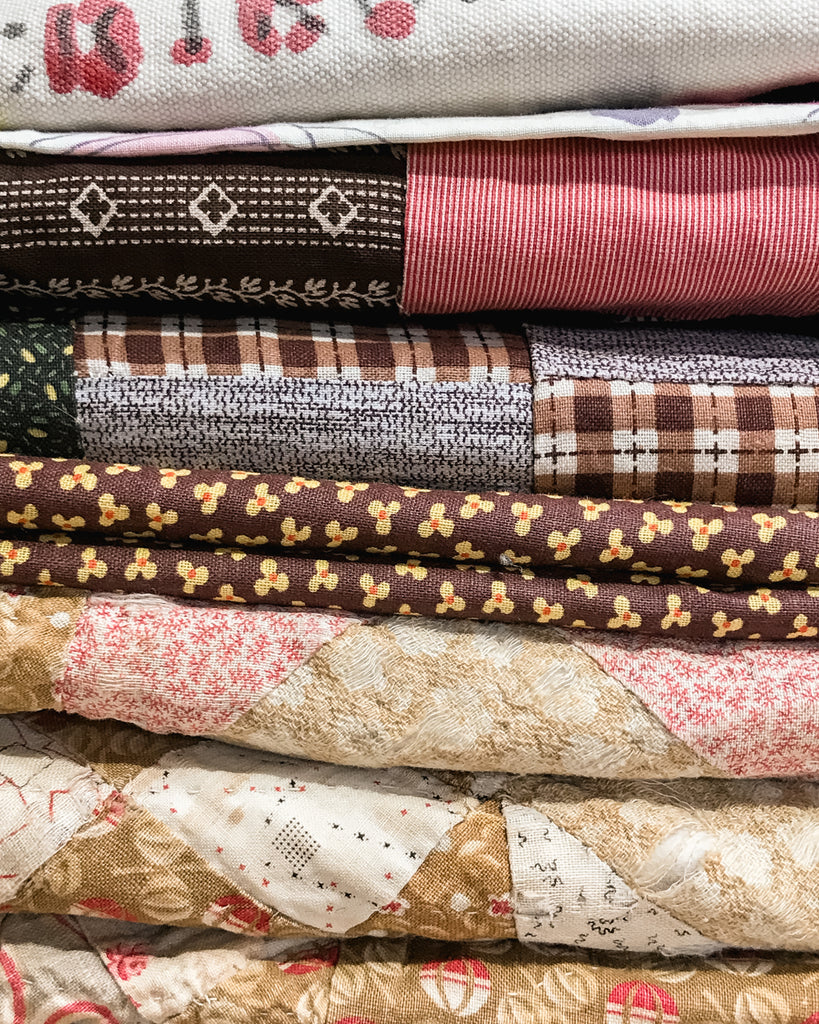
The 1800s quilt, well-loved, and in the colors of Pearl (our puppy!). The assortment of vintage textiles, including our two favourite antique quilts. 

This quilt was started in the 1930s and never finished – we transformed it into pouches lined with waxed canvas! This collection also contains one repurposed canvas tote that was originally designed with a drawstring closure – we’ve adapted it with vegetable-tanned leather straps and a waxed canvas pocket! Spring 2022 Of A Kind Collection
Our first Of A Kind Collection of 2022 is bursting with character! Each of these collections allows us to dig around and find treasures within treasures. Every discovery holds a bit of...
Read The Post -
I am sure my right arm* is stronger for all of the writing and stitching and hauling of pages in journals for so many years of my life. So many miles we’ve traveled together, me and my books. I wonder how many miles of words I’ve written if strung end to end? The first journal that I made was stolen in a café in Amsterdam. What the journal thief couldn’t possibly know was that his actions would set me upon a path.
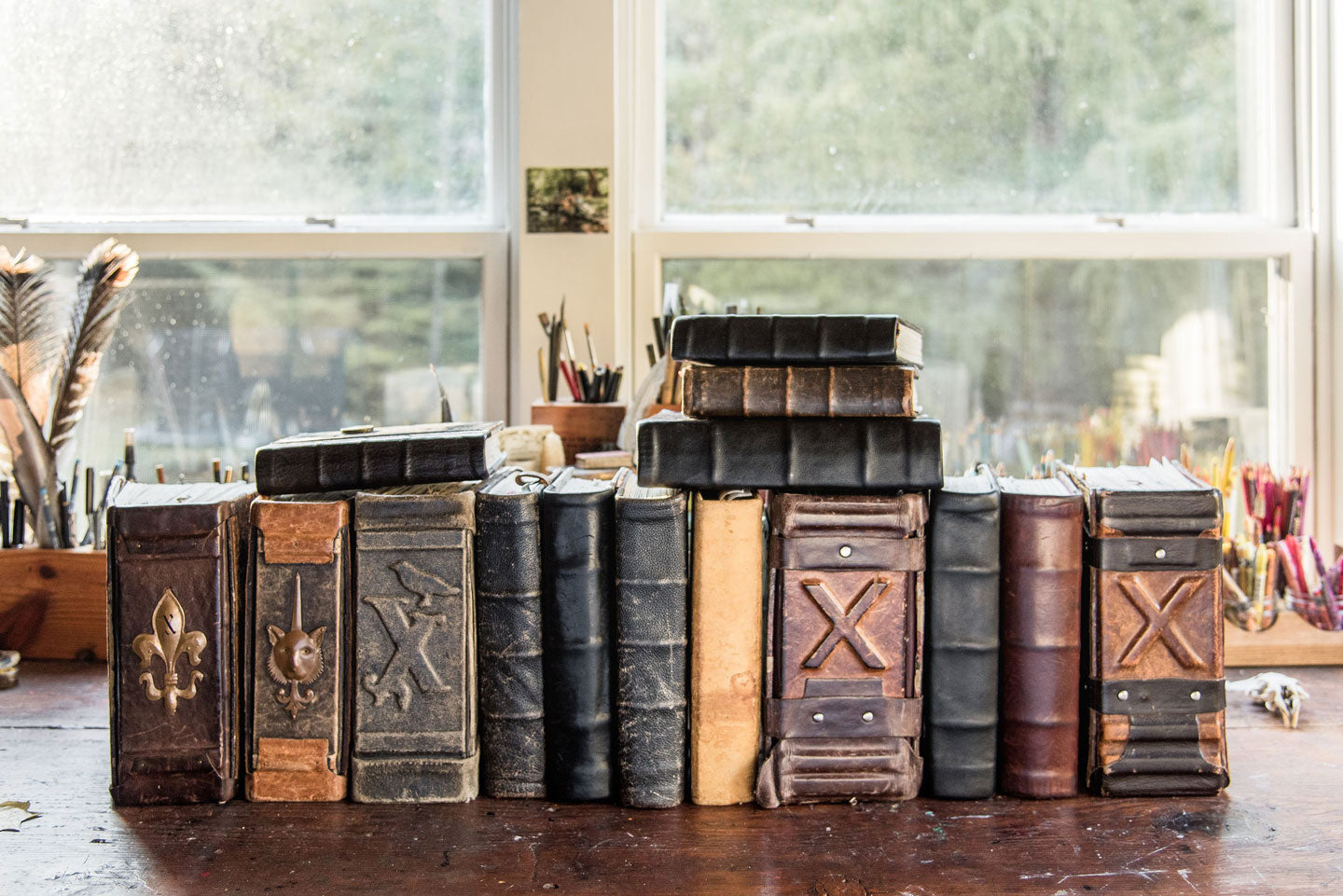

“Whatever you think you can do or believe you can do, begin it. Action has magic, grace, and power in it.”
–Johann Wolfgang GoetheI am sure my right arm* is stronger for all of the writing and stitching and hauling of pages in journals for so many years of my life. So many miles we’ve traveled together, me and my books. I wonder how many miles of words I’ve written if strung end to end? I've always made books (I have one from when I was 6!), but I began to keep a journal regularly when I was 12 years old, and started making my journals when I was 25. I won’t do the math, but there are a lot of years of books and a lot of years of scribbling between now and then. I was always stitching a book or filling one up.
Hunter S. Thompson invited me into his limo one day, outside of The Strand in NYC. Actually, it wasn’t me he invited in, but my journal—I was holding it. I didn’t know anything about Hunter beyond Fear and Loathing, but I climbed in and sat next to him—shoulder to shoulder. When he asked if he could see the journal, I handed it over. Then he asked if he could write in it. I said yes, of course. He wrote a message in Latin and I don’t remember what else. I never did get to translate it because I went to Amsterdam shortly after the encounter and my bag—with my journal in it—was stolen.
That was the first proper journal I had built. I’ve made hundreds since then. But the first one was stolen in a café in Amsterdam. What the journal thief couldn’t possibly know was that his actions would set me upon a path, for despite my initial despair, I struck out in search of a book bindery. After a day of walking and asking nearly every stranger I could make eye contact with about the shop, I’d finally found it. And what a magical place it was! I stocked up on supplies I’d never known existed then went to an upholstery shop up the street, where I discovered antique leather in a dusty floor corner removed from a chair made in the 1800s! With tools and material from the bindery, I set to work making my second journal, using my thighs as a book press. The result, with its battered old leather, looked like it had travelled through time many hundreds of years, and its pages begged for stories like that of The Journal Thief.
The very objects that started this adventure are a foundational piece of our shop. Putting these Tomes into production was no easy task and after much planning, many trials and many years, we’ve got the process down and have been able to explore with variations in headband, textiles, and leather! I appreciate everyone’s questions and interest in these Monsters!


Hand-stitched headbands adorn each Tome. I use all kinds of medium and make all kinds of marks within my journals! 

Working on sketches for Poison for Breakfast by Lemony Snicket! Harper and Jackson Tome Stack! Sign up for our newsletter if you haven’t already!
*since writing this, I've been using my left hand for drawing - beginning with the #100dayproject 2021! I'm still at it, so my left hand is catching up a little.
Handbound Leather Tomes
I am sure my right arm* is stronger for all of the writing and stitching and hauling of pages in journals for so many years of my life. So many...
Read The Post


